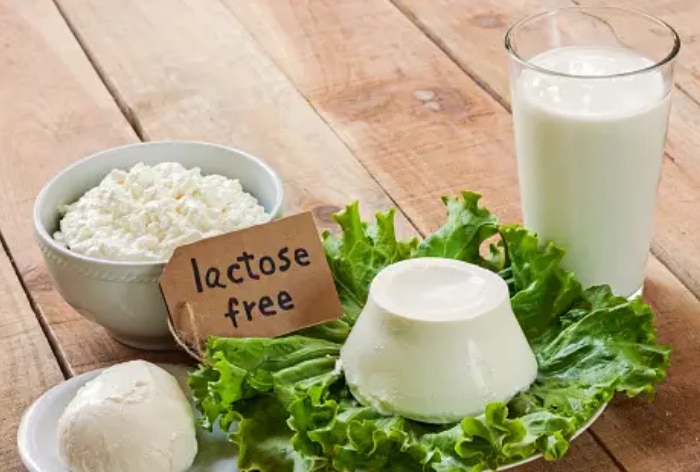When consuming dishes made with ordinary milk, people with lactose intolerance frequently experience stomach and intestinal problems.

Lactose Intolerance: A lack of the enzyme that aids in breaking down lactose, the sugar found in milk, results in lactose intolerance. It leads to gastrointestinal problems such as bloating, flatulence, and vomiting. Lactose intolerance affects at least two-thirds of the adult population worldwide, making it exceedingly widespread. Breast milk contains lactose, and almost everyone is able to digest it from birth. However, lactose intolerance can appear at any age, even well into adulthood.
LACTOSE INTOLERANCE SIGNS AND SYMPTOMS
The first signs and symptoms of lactose intolerance typically appear 30 minutes to two hours after consuming or drinking lactose-containing meals or beverages. Typical indications and symptoms include:
- Abdominal cramps
- Nausea
- Bloating gas
- Diarrhea
Other symptoms include a sudden urge to use the restroom, vomiting, lower abdominal pain, and constipation.
LACTOSE INTOLERANCE CAUSES
Undigested lactose causes sensitivity reactions in the intestine due to lactase enzyme deficiency. The digestion of lactose in the intestines is largely influenced by gut microbes. Since these beneficial bacteria aid in food digestion, if gut microorganisms aren’t present in the proper quantities, it could lead to greater digestive problems. It’s important to remember that a dairy allergy differs from milk intolerance.
LACTOSE INTOLERANCE: FOODS TO EAT AND AVOID
A lactose-free diet may be adopted by those who have lactose intolerance in order to reduce symptoms. To consume less dairy products, some people could decide to adopt a lactose-free diet.
A lactose-free diet can easily include a variety of healthy foods, such as fruits, vegetables, whole grains, nuts, seeds, and legumes.
Milk, cheese, and butter are all dairy products that frequently include lactose. Many prepared meals, including baked products, sauces with cream as an ingredient, and processed meats, may also include it.
If you have lactose intolerance symptoms frequently after consuming dairy products, especially if you are concerned about receiving enough calcium, schedule an appointment with your doctor.

Don’t Miss Out on the Latest Updates.
Subscribe to Our Newsletter Today!

Stay connected with us on social media platform for instant update click here to join our Twitter, & Facebook
We are now on Telegram. Click here to join our channel (@TechiUpdate) and stay updated with the latest Technology headlines.
For all the latest Lifestyle News Click Here
